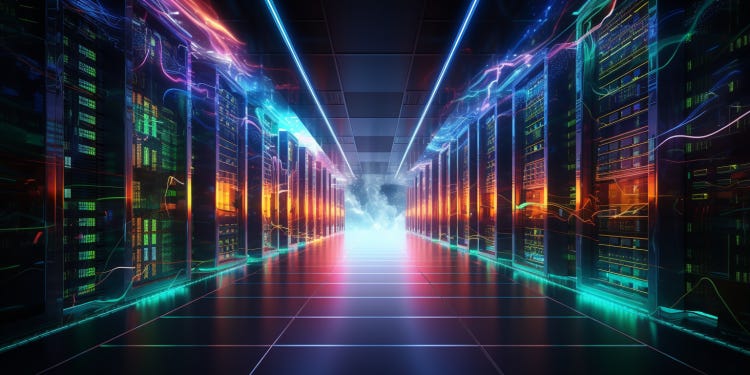The Hidden Cost of Intelligence: How AI Is Straining America’s Power Grid
#AI #EnergyCrisis #OpenAI
AI is not just a software revolution. It’s a power revolution—literally.
Training a single AI model like GPT-4 uses more electricity than 5,000 U.S. homes consume in a year.
Now, AI companies are clashing with America’s electrical grid. 👇
In 2024, the U.S. hit a breaking point.
AI clusters—massive hubs of computing power—started causing voltage fluctuations in major cities.
Why? The electrical grid wasn’t built for this level of constant, massive demand.
The stakes? 🚨 Blackouts. Skyrocketing costs. Slower innovation.
Behind every AI breakthrough is a hidden cost:
Training GPT-3 required enough electricity to power 1,200 homes for a year.
GPT-4? Nearly 5x that amount.
The competition to train bigger and better models is driving unprecedented demand.
But here’s the problem: America’s grid is aging.
70% of transmission lines are over 25 years old.
Building new power lines takes 5-10 years due to red tape.
Renewable energy isn’t growing fast enough to keep up.
The grid can’t handle AI’s appetite.
The bottleneck is already here:
In some regions, AI data centers are being delayed—not because of tech limits, but because there’s no electricity to spare.
We’re facing a new kind of infrastructure crisis.
Enter OpenAI.
The company behind ChatGPT isn’t just building better AI models.
They’ve quietly tripled their Washington D.C. policy team, focusing on a surprising mission:
Securing reliable power for the future of AI.
OpenAI’s strategy?
Lobbying for “AI economic zones”: Fast-tracked permitting for data centers in strategic locations.
National transmission networks: Moving electricity from surplus regions to AI hubs.
Partnering with utilities: Co-developing new power plants tailored for AI.
But it’s not just OpenAI.
Microsoft is investing in solar + batteries for AI data centers.
Google is experimenting with geothermal energy for its AI operations.
Smaller AI startups are being forced to relocate to avoid power shortages.
The stakes are massive:
If the U.S. fails to upgrade its grid, China could pull ahead in the AI race.
China is already building AI-focused power zones, with dedicated coal plants and renewable farms to power their models.
This isn’t just about electricity. It’s about the future of innovation.
AI will drive industries worth trillions—healthcare, education, defense, and more.
But none of that happens without the infrastructure to support it.
Yet, resistance is fierce:
Environmental groups are pushing back against new power plants, citing emissions concerns.
Rural communities are opposing new transmission lines cutting through their land.
And some policymakers fear Big Tech’s growing influence.
The irony?
AI promises to revolutionize energy efficiency—optimizing grids, predicting outages, even managing renewables.
But to unlock that potential, we need massive upfront investment.
So, what’s next?
Expect to see AI companies as energy players.
Partnerships with utilities.
Investments in renewable energy.
Lobbying for faster permitting processes.
This isn’t just an AI arms race. It’s an energy arms race.
Why does this matter to you?
Because AI’s success will shape:
Your job (AI tools need power to run).
Your bills (energy demand affects costs).
Your community (new power plants/transmission lines near you).
The AI revolution isn’t just digital—it’s deeply physical.
Here’s the big question:
Who should pay for this transformation?
AI companies profiting from the revolution?
Taxpayers funding national infrastructure?
Private-public partnerships?
The answer will define the next decade.
One thing is clear:
The future of AI is tied to the future of energy.
No power, no progress.
Want to shape the debate? Stay informed. The stakes couldn’t be higher.
Love what you read? Subscribe and never miss an update!





